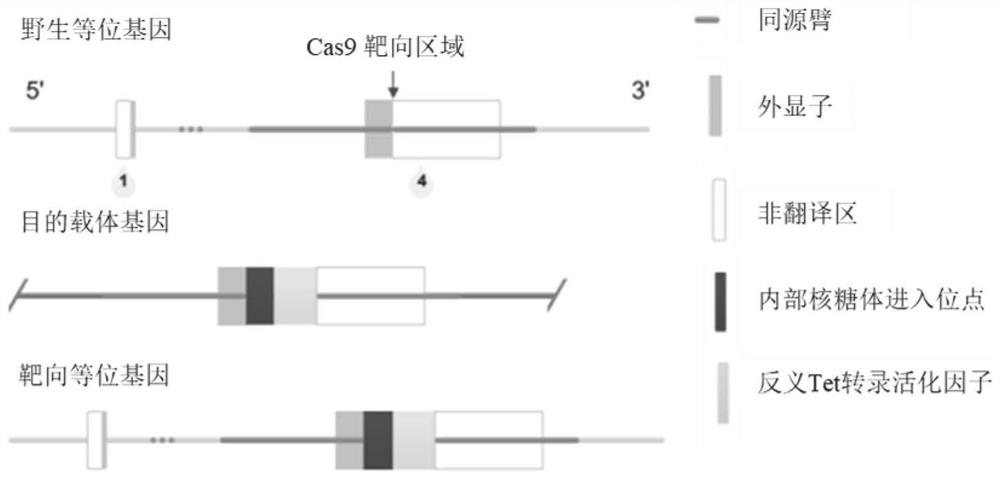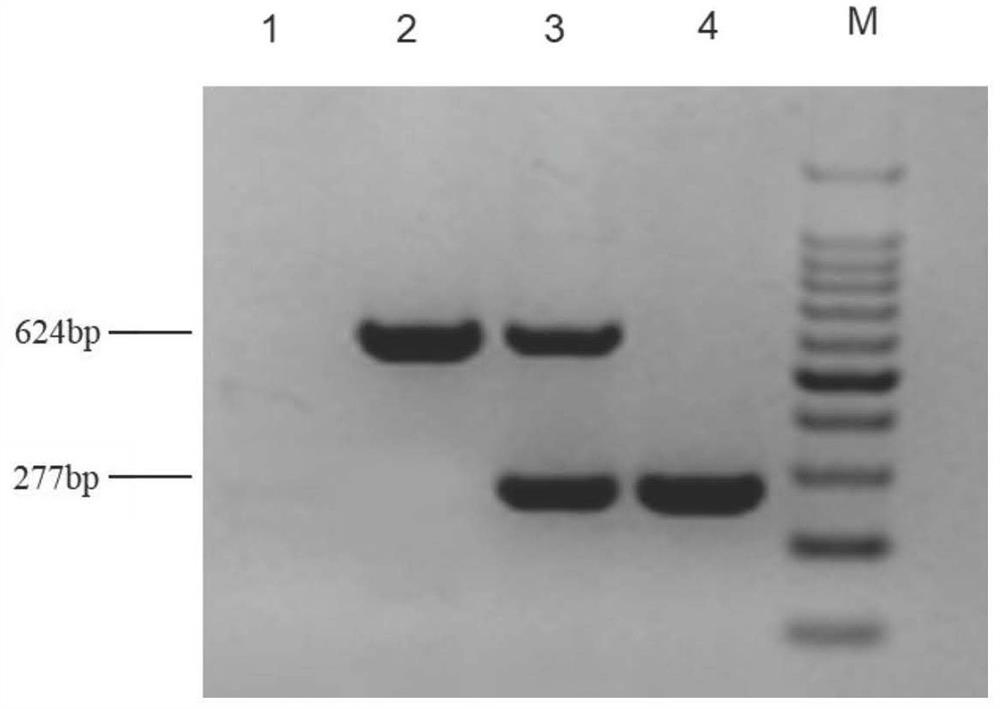Construction and application of inducible uterine epithelium specific genetic engineering mouse
A genetic engineering and specific technology, which is applied in the construction and application field of inducible uterine epithelial-specific genetic engineering mice, can solve uterine development problems, gene deletion, gene function research and other problems, and achieve the effect of accelerating the breeding speed
- Summary
- Abstract
- Description
- Claims
- Application Information
AI Technical Summary
Problems solved by technology
Method used
Image
Examples
Embodiment 1
[0048] 1) Genomic DNA extraction steps are as follows:
[0049] 1. Use ear tag pliers and matching ear tags to mark the ears of the mice, cut a small piece of tail tissue about 0.2cm long and put it into a 1.5ml EP tube, and write the corresponding ear tag on the EP tube. label.
[0050] 2. Add 200 μl of rat tail lysate and 4 μl of proteinase K (invitrogen) at a concentration of 20 mg / ml to each EP tube, mix well, and centrifuge so that the tail tissue is submerged in the mixture, and place in a metal heater at 60°C for 3 hours, After cooling at 95°C for 15 minutes, centrifuge to take the supernatant, which is the mouse genomic DNA solution.
[0051] 2) Agarose gel electrophoresis:
[0052] Preparation of 2% agarose gel: Add 120mL 1×TEA working solution and 2.4g agar powder into a conical flask, heat in a microwave oven until the agarose is completely dissolved, add 6 μL nucleic acid dye (Sangon Biotech) according to the ratio of 1:2000 Engineering), shake well and pour it ...
Embodiment 2
[0064] Wnt7a rtTA / + TeO + / + wxya F / + The construction method is mainly divided into two steps:
[0065] S1: first genotype mouse Wnt7a rtTA / + and TetO cre / + Hybridization, the genotype of the first generation is Wnt7a rtTA / + TeO cre / + The probability is 1 / 4, then the genotypes are all Wnt7a rtTA / + TeO cre / + A pair of male and female mice crossed to obtain the genotype Wnt7a rtTA / rtTA TeO cre / + The probability of is 1 / 8.
[0066] S2: Separate the genotypes to mTmG F / F and Wnt7a rtTA / rtTA TeO cre / + A pair of male and female mice crossed, the genotype in the offspring is Wnt7a rtTA / + TeO cre / + wxya F / + The mice can be used for dox-inducible experiments, and the genotype is Wnt7a rtTA / + TeO + / + wxya F / + mice were used as control mice.
Embodiment 3
[0068] On the 7th day after birth, the newborn rats were injected into the uterine cavity, and DOX 2 μl was given in the uterine cavity of the newborn rats at a concentration of 10 mg / ml. Among them, the intrauterine injection operation of offspring is the key point of the technology, because the uterine cavity of offspring is too small, and the offspring are weak, and they are still in the lactation stage. The surgical method and postoperative recovery process of offspring need to be carefully and repeatedly tested to determine the best plan. . After repeated exploration and practice, the following experience was obtained:
[0069] First, in the selection of anesthetics, we chose ether, which is less toxic and easy to operate. Surgical experience shows that the pups of PND7 can start the operation after being anesthetized with ether for about 1 minute, and the operation process is controlled at about 7 minutes.
[0070] Second, separate the mother rat and the female offsprin...
PUM
 Login to View More
Login to View More Abstract
Description
Claims
Application Information
 Login to View More
Login to View More - R&D
- Intellectual Property
- Life Sciences
- Materials
- Tech Scout
- Unparalleled Data Quality
- Higher Quality Content
- 60% Fewer Hallucinations
Browse by: Latest US Patents, China's latest patents, Technical Efficacy Thesaurus, Application Domain, Technology Topic, Popular Technical Reports.
© 2025 PatSnap. All rights reserved.Legal|Privacy policy|Modern Slavery Act Transparency Statement|Sitemap|About US| Contact US: help@patsnap.com



